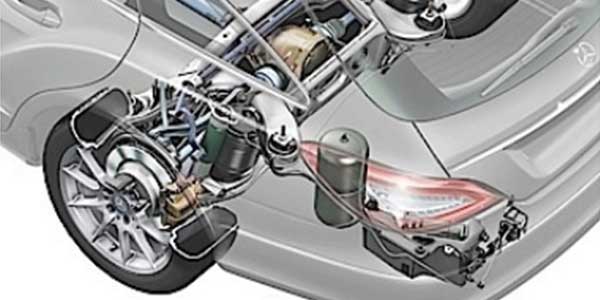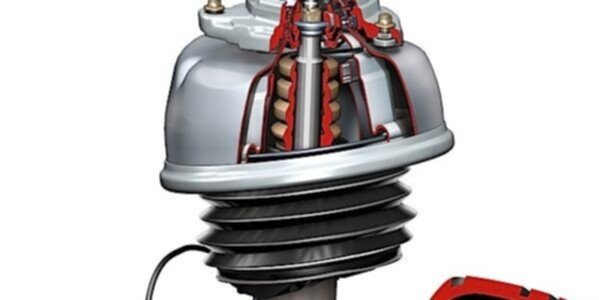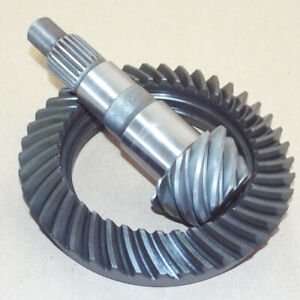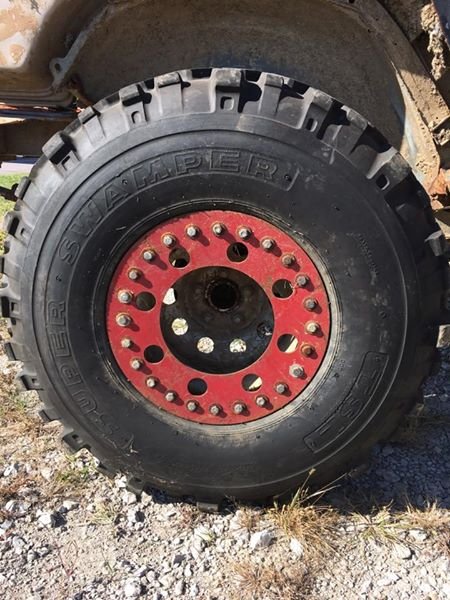Common Mercedes Airmatic Issues And Problems: Top Fixes and Solutions
Mercedes airmatic issues and problems include suspension failure and air leaks, which can lead to a rough ride and costly repairs. The airmatic system is known for its performance and comfort, but over time, components can wear out, causing these issues.

Credit: www.tomorrowstechnician.com
Understanding The Airmatic System
The airmatic system in your mercedes plays a crucial role in ensuring a smooth and comfortable ride. However, like any other mechanical system, it is prone to issues and problems over time. Understanding how the airmatic system functions and the importance of maintaining it can help you stay ahead of potential problems and keep your mercedes performing at its best.
In this section, we will explore how the airmatic system works and why maintaining it is vital for your vehicle’s longevity.
How Does The Airmatic System Work?
- The airmatic system in your mercedes utilizes air springs and electronically controlled dampers to maintain optimal ride height and adjust suspension settings based on road conditions.
- The system consists of several components, including air springs, a compressor, valves, sensors, and a control module.
- When you start your mercedes, the airmatic system’s compressor kicks in, pressurizing air and sending it to the air springs to maintain the ideal ride height.
- Based on inputs from various sensors, the control module adjusts the damping characteristics of the suspension to ensure a smooth and comfortable ride.
- The airmatic system constantly monitors road conditions and makes rapid adjustments to the suspension settings, allowing for improved stability and handling.
Importance Of Maintaining Your Airmatic System
- Regular maintenance and timely repairs of your airmatic system can prevent more significant issues and prolong the lifespan of the system.
- Neglecting routine maintenance can lead to problems such as air leaks in the air springs, compressor failure, or malfunctioning control modules.
- Regular inspections and servicing can help identify and address minor issues before they escalate into costly repairs.
- Maintaining proper ride height and suspension settings not only ensures your comfort but also enhances the overall safety and performance of your mercedes.
- When the airmatic system is properly maintained, you can enjoy a smooth and comfortable ride, even on rough roads, and experience enhanced driving dynamics and handling.
Understanding how the airmatic system functions and the significance of ongoing maintenance is crucial for every mercedes owner. By taking care of your airmatic system and addressing issues promptly, you can enjoy a safe, comfortable, and satisfying driving experience for years to come.
Common Mercedes Airmatic Issues
Are you experiencing issues with your mercedes airmatic system? Don’t worry, you’re not alone. The airmatic system is a sophisticated suspension system that provides a smooth and comfortable ride in mercedes vehicles. However, like any other mechanical system, it can encounter problems over time.
In this blog post, we will discuss the most common mercedes airmatic issues and problems that you should be aware of. Let’s dive in and explore these common issues together.
Warning Signs Of Airmatic Problems
- Illuminated airmatic warning light on the dashboard: If you see this warning light, it indicates that there could be an issue with your airmatic system. It’s important not to ignore this warning as it could lead to further damage if left unaddressed.
- Bumpy or uncomfortable ride: One of the most noticeable signs of airmatic problems is a rough ride quality. If you feel every bump and pothole on the road, it could be a sign that the airmatic system is not functioning properly.
- Uneven ride height: Another common issue with the airmatic system is an uneven ride height. If you notice that your vehicle is displaying different height levels on each corner, it could indicate a problem with the airmatic suspension.
- Delayed or slow adjustment: If your airmatic suspension takes longer than usual to adjust to changing road conditions, it could be a sign of a malfunctioning system.
- Strange noises: Unusual noises coming from the suspension, such as squeaking or clunking sounds, can be an indication of a failing airmatic system.
Experiencing Rough Ride Quality
- Airmatic strut failure: The airmatic struts play a crucial role in providing a smooth ride. If they fail, it can result in a rough ride quality, with increased vibrations and discomfort.
- Leaking air springs: The air springs in the airmatic system can develop leaks over time, leading to a loss of air pressure and a compromised ride quality.
- Faulty compressor: The airmatic compressor is responsible for supplying the necessary air pressure to the suspension system. If it malfunctions or fails, it can result in a bumpy ride.
- Airmatic control module issues: The airmatic control module is the brain behind the system, controlling the suspension’s adjustments. If this module encounters problems, it can lead to a rough ride quality.
Unusual Noises Coming From Suspension
- Worn-out suspension components: Over time, various suspension components can wear out, leading to strange noises. These components may include bushings, control arms, or ball joints.
- Faulty airmatic solenoids: The airmatic solenoids are responsible for controlling the air flow within the system. If these solenoids fail or get stuck, it can result in unusual noises.
Vehicle Displaying Uneven Height Levels
- Failed level sensors: The airmatic system uses level sensors to detect the vehicle’s height and make necessary adjustments. If these sensors fail, the system may display uneven height levels.
- Suspension leaks: Any leaks in the airmatic system, such as air springs, lines, or connections, can result in inconsistent height levels.
Being aware of the common mercedes airmatic issues and problems can help you identify potential problems early on and address them promptly. If you notice any warning signs or experience rough ride quality, unusual noises, or uneven height levels, it is recommended to have your airmatic system inspected by a qualified professional.
Remember, maintaining a well-functioning airmatic system will ensure a smoother and more comfortable ride in your mercedes.
Causes And Diagnostic Methods
Mercedes airmatic issues can be frustrating and costly to deal with. The airmatic system is a sophisticated suspension system that is designed to provide a smooth and comfortable ride. However, like any other mechanical system, it is susceptible to issues and problems.
In this section, we will explore the common causes of airmatic issues and the diagnostic methods used to identify them.
Common Causes Of Airmatic Issues
- Leaking air springs: One of the most common causes of airmatic problems is leaking air springs. Over time, the rubber seals on the air springs can deteriorate, leading to air leakage. This can result in a sagging suspension and a bumpy ride.
- Faulty compressor: The compressor is responsible for pressurizing the air springs and maintaining the proper ride height. If the compressor fails, the airmatic system may not function correctly, causing the suspension to become stiff or remain in a lowered position.
- Damaged pressure lines: The airmatic system relies on a network of pressure lines to deliver air to the air springs. If these lines become damaged or develop leaks, it can disrupt the flow of air and affect the suspension’s performance.
Diagnostic Tools And Techniques
- Checking error codes: When troubleshooting airmatic issues, one of the first steps is to check the error codes stored in the vehicle’s computer system. Using a diagnostic tool specifically designed for mercedes vehicles, technicians can retrieve these codes and identify the specific problem areas.
- Performing suspension inspections: To further diagnose airmatic issues, technicians will visually inspect the suspension components for any signs of damage or wear. This includes inspecting the air springs, pressure lines, compressor, and other related components.
By understanding the common causes of airmatic issues and utilizing diagnostic methods, technicians can effectively identify and resolve problems with the airmatic system. Whether it’s addressing leaking air springs, a faulty compressor, or damaged pressure lines, timely diagnosis and proper repairs can help restore the smooth and comfortable ride that mercedes owners expect.
Top Fixes For Airmatic Problems
Mercedes airmatic issues and problems can be a cause of frustration for owners. However, many of these issues can be resolved with the right fixes. We will explore the top fixes for airmatic problems, including replacing faulty air springs, repairing or replacing the compressor, and fixing leaking pressure lines.
Replacing Faulty Air Springs
Replacing faulty air springs is a common solution to airmatic problems. It is essential to choose high-quality air springs that can withstand the demands of your mercedes model. Some of the best brands to consider for air springs replacement include arnott, bilstein, and oem options.
By replacing faulty air springs, you can restore the smooth and comfortable ride that your mercedes is known for.
Step-By-Step Replacement Guide
To replace the faulty air springs on your mercedes, follow this step-by-step guide:
- Begin by safely lifting your vehicle and removing the wheel/tire assembly.
- Locate the air spring, which is typically positioned near the wheel.
- Disconnect the air line and electrical connector connected to the air spring.
- Using appropriate tools, remove the air spring from its mounting position.
- Install the new air spring by reversing the removal process.
- Reconnect the air line and electrical connector, ensuring proper connection.
- Repeat the process for all faulty air springs.
Repairing Or Replacing The Compressor
Another potential fix for airmatic problems is to repair or replace the compressor. The compressor is responsible for supplying air to the air springs. Signs of a faulty compressor include loud noises, excessive vibration, and airmatic system failure. If you notice these signs, it is crucial to address the issue promptly.
Both diy and professional repair options are available, depending on your expertise and comfort level. However, professional repair is recommended for complex issues or if you are unsure about the process.
Fixing Leaking Pressure Lines
Leaking pressure lines can also contribute to airmatic problems. It is essential to identify common leak locations, such as connections, seals, or damaged lines. Fixing leaking pressure lines may require tightening connections, replacing seals, or even replacing damaged lines. Proper diagnosis and repair are crucial to ensure the longevity and performance of your mercedes airmatic system.
Again, the level of repair required may determine whether you opt for a diy approach or seek professional assistance.
By following these top fixes for airmatic problems, you can address common issues and enjoy a smoother and more comfortable driving experience in your mercedes. Remember to prioritize quality parts, proper installation, and professional help when necessary to maintain the optimal performance of your airmatic system.
Preventative Maintenance Tips
Air suspension is a popular feature in many mercedes models, providing a comfortable ride and improved handling. However, like any complex system, it comes with its own set of potential issues and problems. To ensure your mercedes airmatic system keeps performing optimally, it’s important to take preventive maintenance measures.
In this section, we will explore some tips to help you avoid common airmatic issues and ensure the longevity of your mercedes.
Regular Inspections And Maintenance Schedule:
- Schedule regular inspections with a qualified technician who is experienced in working with mercedes airmatic systems.
- Inspect the air springs, shock absorbers, and associated components for any signs of wear, leaks, or damage.
- Check for any error messages on the dashboard that may indicate a potential airmatic issue.
- Follow the manufacturer’s recommended maintenance schedule, which includes flushing the suspension system and replacing the air filters and fluids at specified intervals.
- Regularly check the suspension components for proper alignment and adjustment to prevent premature wear and tear.
Proper Tire Pressure And Wheel Alignment:
- Maintaining the correct tire pressure is crucial for the optimal performance of your airmatic system. Refer to the vehicle’s owner manual or the tire placard for the recommended tire pressure.
- Inspect the tires regularly for any signs of uneven wear, which may indicate improper wheel alignment. Misaligned wheels can put unnecessary strain on the airmatic system and lead to premature failure.
- Ensure that the wheels are properly aligned by a professional technician using advanced alignment equipment. Proper alignment will not only improve the airmatic system’s performance but also extend the life of your tires.
Avoiding Excessive Loads And Aggressive Driving:
- Excessive weight can strain the airmatic system, leading to premature wear and tear. Avoid overloading your vehicle beyond its recommended capacity.
- Aggressive driving, such as excessive speeding, hard braking, and rough handling, can put additional stress on the airmatic system. Maintain a smooth driving style to reduce the strain on the system and improve its longevity.
- When driving on rough or uneven roads, exercise caution and reduce speed to minimize the impact on the suspension components.
By following these preventive maintenance tips, you can help avoid common issues and problems related to the mercedes airmatic system. Remember that regular inspections, proper tire pressure, wheel alignment, and responsible driving habits are key to keeping your airmatic system in optimal condition and ensuring a comfortable and safe ride for years to come.
Frequently Asked Questions (Faqs)
The mercedes airmatic suspension system is known for its superior comfort and smooth ride quality. However, like any other automotive component, it is prone to issues and problems over time. In this section of our blog post, we will address some frequently asked questions (faqs) regarding common mercedes airmatic issues and their solutions.
Can I Still Drive My Mercedes With Airmatic Problems?
- If you encounter airmatic problems in your mercedes, it is not recommended to continue driving the vehicle without addressing the issue.
- A malfunctioning airmatic system can lead to performance and safety concerns, such as an unstable ride, uneven tire wear, and reduced braking efficiency.
- It is advisable to have your mercedes inspected by a qualified technician to diagnose and resolve any airmatic problems before resuming normal driving.
How Much Does It Cost To Repair The Airmatics System?
- The cost of repairing the airmatic system can vary depending on the specific problem, the model of your mercedes, and the location of the repair shop.
- On average, the repair cost for airmatic issues can range from $1,000 to $5,000, including parts and labor.
- It’s important to note that delaying repairs may lead to additional damage and higher costs in the long run. Therefore, addressing airmatic issues promptly can help you avoid further expenses.
Can I Replace Airmatic With A Traditional Suspension System?
- While it is technically possible to replace the airmatic system with a traditional suspension system, it is not recommended.
- The airmatic system is a sophisticated and advanced technology that provides a superior level of comfort and ride quality.
- Retrofitting a traditional suspension may compromise the overall performance and handling characteristics of your mercedes.
- Moreover, converting the suspension system can be an expensive and time-consuming process.
Remember, if you are experiencing any airmatic problems in your mercedes, it is advisable to consult with a certified technician who specializes in mercedes repairs. They will be equipped with the knowledge and expertise to diagnose and resolve any airmatic issues effectively, ensuring your vehicle’s optimal performance and safety on the road.
Frequently Asked Questions Of Common Mercedes Airmatic Issues And Problems
How Do You Know If Your Mercedes Airmatic Is Failing?
Signs of a failing mercedes airmatic include a sagging suspension, uneven tire wear, rough rides, and warning messages.
What Causes Mercedes Airmatic To Malfunction?
Common causes of mercedes airmatic malfunctions include worn-out air springs, faulty valves, leaking air lines, or a malfunctioning compressor.
How Much Does It Cost To Repair A Mercedes Airmatic?
The cost to repair a mercedes airmatic can range from $1,000 to $3,000, depending on the specific issue and whether parts need to be replaced.
Conclusion
To sum it up, addressing common mercedes airmatic issues and problems is crucial in maintaining the performance and safety of your vehicle. From leaks and air compressor failure to faulty sensors and electronic malfunctions, these issues can greatly impact the overall functionality of your airmatic suspension system.
Regular maintenance and inspections are essential to catch potential problems early on and prevent further damage. By taking care of these issues promptly, you can prolong the lifespan of your airmatic system and avoid more costly repairs in the future.
Remember to consult a professional and reputed mechanic or dealership for any repairs or replacements needed. Stay proactive and attentive to your mercedes airmatic system, and you’ll ensure a smooth and comfortable ride for years to come.







